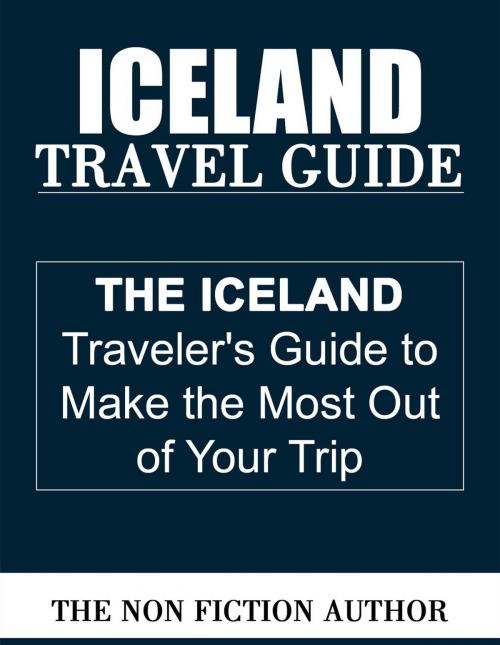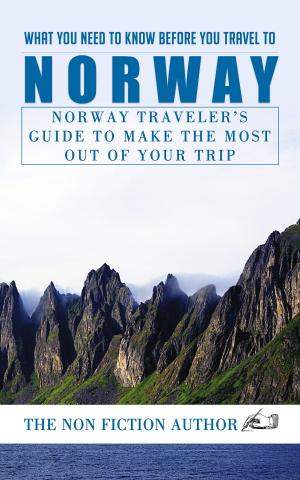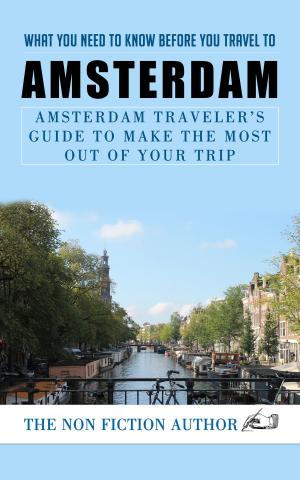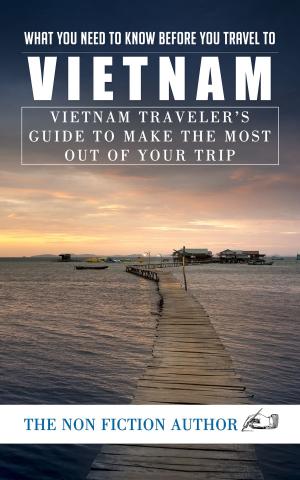| Author: | The Non Fiction Author | ISBN: | 9781386375647 |
| Publisher: | The Non Fiction Author | Publication: | August 22, 2017 |
| Imprint: | Language: | English |
| Author: | The Non Fiction Author |
| ISBN: | 9781386375647 |
| Publisher: | The Non Fiction Author |
| Publication: | August 22, 2017 |
| Imprint: | |
| Language: | English |
Iceland is a land of extremes with icebergs floating near hot springs, desolation and luscious beauty, vibrant colors painted on empty expanses without a living plant or animal in sight. You can party until the sheep come home one night then watch the northern lights dance over your head while you try to decide if you believe that it is the result of particles from the sun hitting Earth’s atmosphere, or whether it is aliens saying “hello”.
Despite its remote location Iceland still draws more than a million visitors every year, three times the population of the country. The magnetic power of Iceland to pull tourists from their homes to its shores is found deep below the surface where the raw planetary crust is slowly splitting apart along the Mid-Atlantic Ridge, the source of many mountains and earthquakes in Iceland. While there many geologically active volcanoes generally they are not continually spewing lava, though you could experience the explosive nature of the volatile earth during your visit if there has been a recent eruption, or you are lucky enough to be stranded in Iceland during one.
There are numerous other attractions not involving molten lava, from waterfalls to fjords and the Icelandic cities and towns. The capital, Reykjavík, is on the southeastern coast of the country and is home to nearly a third of the population with an abundance of museums, bars, cafes and gift shops. Nearby to Reykjavík you can go on a whale watching tour, second only to Húsavík in northern Iceland. You can (and should) make a day trip to see the highlights of the Golden Circle including drifting Þingvellir National Park, tremendous Gullfoss, and the explosive geysers. While Reykjavík may seem like a small, quiet metropolis, it is in fact the largest city in the country. Other small villages are scattered around mainly on the coast but in some places you can drive for hours without seeing another car or person.
The biggest highlight of Iceland for most visitors lies beyond the city limits, so get out of the urban and into the rural wonder. Stunning national parks, immense glaciers, and vivid landscapes await those who explore into the interior and up into the highlands. The natural side of the country is a draw for most visitors who seek an escape from paved roads and honking cars. Though it is only accessible during the summer the central regions are home to impressive scenes and popular hiking routes, both day trips and multi-day excursions.
As you circuit the island you will see the coast and countryside change from sandy to cliff faces, rolling hills with snow perched on top and islands poking out of the white capped waves. If the sight of snow chills your blood you can stop in the natural hot springs to warm up, or take a swim in the local swimming pools which are often geothermally heated as well.
Though your options for exploration are limited in the winter months there is the increased likelihood that you could catch the spectacular Aurora Borealis giving the show of a lifetime. Winter is also a good time to tour one of Iceland’s glaciers, a major draw for tourists who enjoy strapping on crampons, grabbing an ice axe, and trekking up onto the frozen, barren expanse. Any time of year it is a good time to visit Iceland.
Culturally Iceland shares much of its history and roots with Scandinavian countries like Norway, Sweden and Denmark. Today there is a wealth of written material and the surviving records date from when Iceland was first inhabited in the tenth century.
Iceland is a land of extremes with icebergs floating near hot springs, desolation and luscious beauty, vibrant colors painted on empty expanses without a living plant or animal in sight. You can party until the sheep come home one night then watch the northern lights dance over your head while you try to decide if you believe that it is the result of particles from the sun hitting Earth’s atmosphere, or whether it is aliens saying “hello”.
Despite its remote location Iceland still draws more than a million visitors every year, three times the population of the country. The magnetic power of Iceland to pull tourists from their homes to its shores is found deep below the surface where the raw planetary crust is slowly splitting apart along the Mid-Atlantic Ridge, the source of many mountains and earthquakes in Iceland. While there many geologically active volcanoes generally they are not continually spewing lava, though you could experience the explosive nature of the volatile earth during your visit if there has been a recent eruption, or you are lucky enough to be stranded in Iceland during one.
There are numerous other attractions not involving molten lava, from waterfalls to fjords and the Icelandic cities and towns. The capital, Reykjavík, is on the southeastern coast of the country and is home to nearly a third of the population with an abundance of museums, bars, cafes and gift shops. Nearby to Reykjavík you can go on a whale watching tour, second only to Húsavík in northern Iceland. You can (and should) make a day trip to see the highlights of the Golden Circle including drifting Þingvellir National Park, tremendous Gullfoss, and the explosive geysers. While Reykjavík may seem like a small, quiet metropolis, it is in fact the largest city in the country. Other small villages are scattered around mainly on the coast but in some places you can drive for hours without seeing another car or person.
The biggest highlight of Iceland for most visitors lies beyond the city limits, so get out of the urban and into the rural wonder. Stunning national parks, immense glaciers, and vivid landscapes await those who explore into the interior and up into the highlands. The natural side of the country is a draw for most visitors who seek an escape from paved roads and honking cars. Though it is only accessible during the summer the central regions are home to impressive scenes and popular hiking routes, both day trips and multi-day excursions.
As you circuit the island you will see the coast and countryside change from sandy to cliff faces, rolling hills with snow perched on top and islands poking out of the white capped waves. If the sight of snow chills your blood you can stop in the natural hot springs to warm up, or take a swim in the local swimming pools which are often geothermally heated as well.
Though your options for exploration are limited in the winter months there is the increased likelihood that you could catch the spectacular Aurora Borealis giving the show of a lifetime. Winter is also a good time to tour one of Iceland’s glaciers, a major draw for tourists who enjoy strapping on crampons, grabbing an ice axe, and trekking up onto the frozen, barren expanse. Any time of year it is a good time to visit Iceland.
Culturally Iceland shares much of its history and roots with Scandinavian countries like Norway, Sweden and Denmark. Today there is a wealth of written material and the surviving records date from when Iceland was first inhabited in the tenth century.















